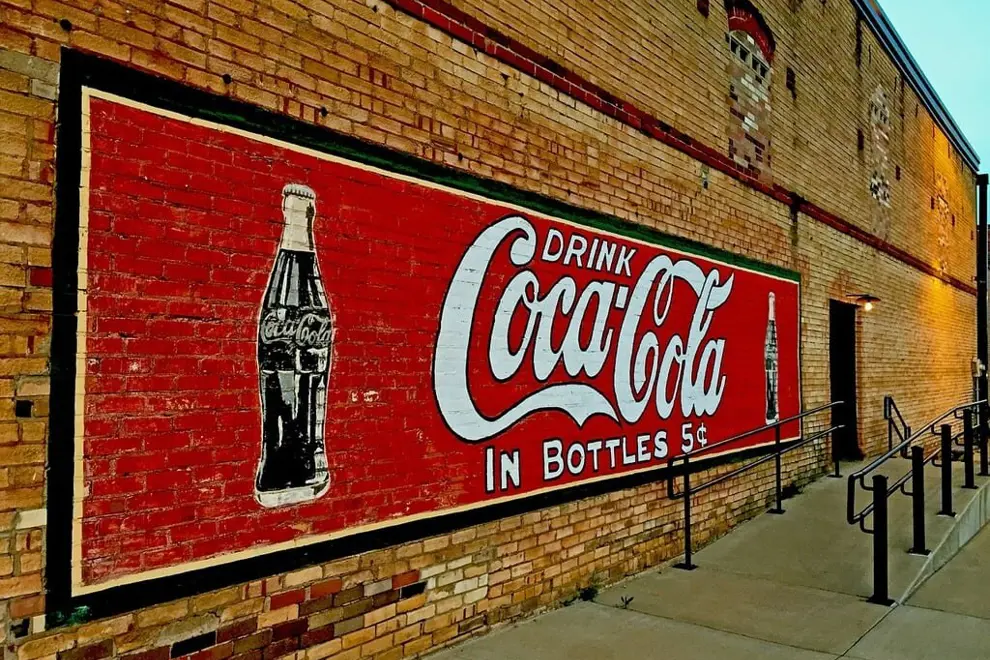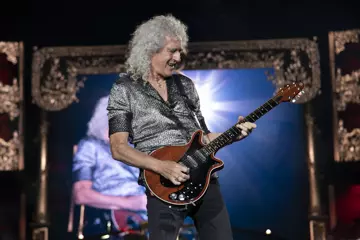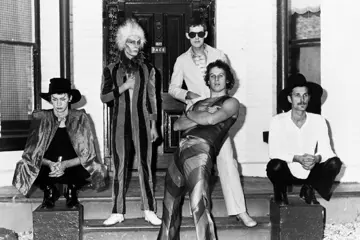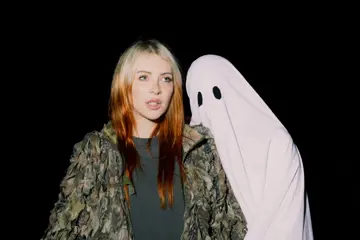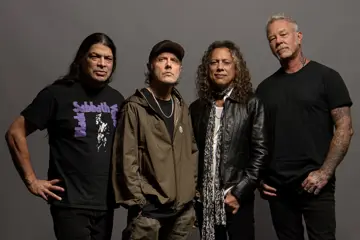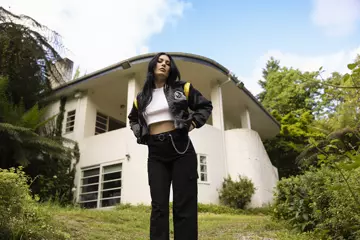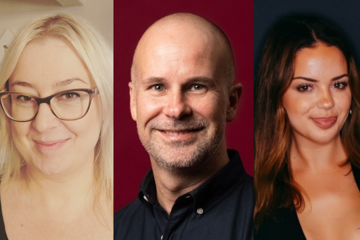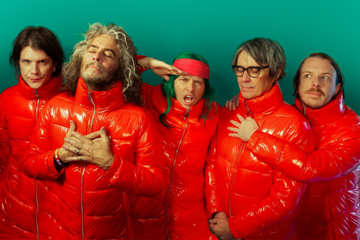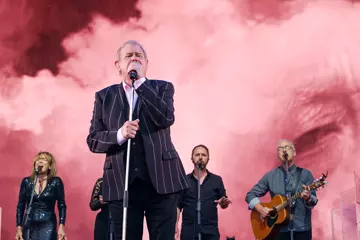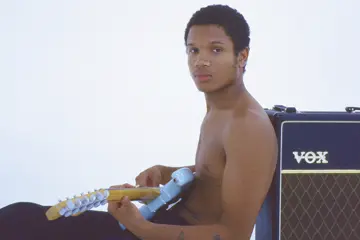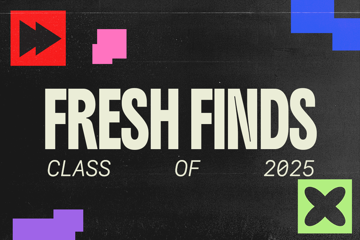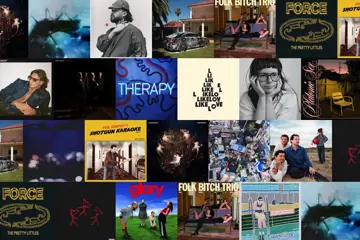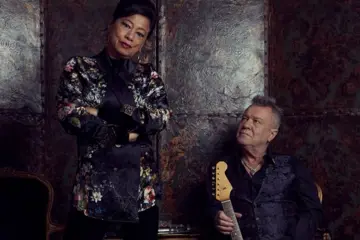Coca-Cola is launching its own real thing records, partnering with Universal Music Group.
The “genre-agnostic” label will aim to increase the profile of emerging talent from around the world and deepen the connection between artists and fans, Coca-Cola said in a statement.
Its first two acts are already part of the Universal Music family on other labels.
French-New Zealand acoustic pop artist Max Allais is on Better Now Records through Universal Music Germany. Indian singer-songwriter and producer Aksomaniac (Def Jam Recordings India /Universal Music India) has a blend of jazz, R&B, hip-hop and India’s traditional Carnatic music.
“For years, Universal Music Group and The Coca-Cola Company have shared a belief in the power of music to spark connection and shape meaningful experiences,” said Richard Yaffa, EVP of Universal Music Group for Brands.
“With the launch of real thing records., we are taking that vision further – joining forces to build a modern label that champions artistry and amplifies emerging voices on global and local stages, while giving fans the cultural moments they crave.”
Don't miss a beat with our FREE daily newsletter
UMG and Coca-Cola have been working together for some time, notably on Coke Studio, which launched globally in 2022 as a platform to spotlight emerging talent.
Coke Studio was introduced in Australia in 2024, starting with Tones And I, Young Franco and New Zealand’s CHAII collaborating on a track.
THE FIRST FIZZ
Coca-Cola was invented by US pharmacist John Pemberton in 1886 in Atlanta, Georgia, initially with red wine and ingredients of the kola nut, which included caffeine and cocaine.
It was originally advertised as a brain tonic to relieve headaches and exhaustion. It was also nicknamed “Atlanta champagne”.
The cocaine element – tiny with only 9 milligrams per glass – was removed in 1903.
Business tycoon and future Atlanta mayor Asa Griggs Candler bought Coca-Cola from Pemberton in 1888 for $550 and marketed the drink aggressively, initially giving away samples to wealthy people.
Here are some examples of the soft drink’s connection to music.
Andrew Sisters: Rum And Coca-Cola (1945)
One of the best known of the soft drink’s songs, it continues to appeal with its calypso summery grooves and signalling the joys of holidaying in a tropical island like Trinidad.
But of course, summery songs tend to have a dark side, and Rum And Coca-Cola was no different.
The melody was based on Venezuelan calypso composer Lionel Belasco’s L'Année Passée, in turn based on a folk song from the nearby island of Martinique.
The lyrics were by Rupert Grant (stage name: Lord Invader), a calypso musician from Trinidad who wrote about how 20,000 US soldiers and sailors stationed on the island during World War II were flashing their dollars to women on the Port-of-Spain waterfront. "Both mother and daughter/ Working for the Yankee dollar.”
As part of its war effort, Coca-Cola shipped 5 billion bottles to where US troops were stationed (including Australia) to buy for 5 cents, so it was obviously heavily consumed.
The song was a hit throughout the islands. Around that time, US comedian Morey Amsterdam arrived as part of a troupe to entertain the troops and immediately knew its hit-worthiness.
He hightailed it back to New York where he published the song, with his name as lyricist and music by Jeri Sullivan & Paul Baron. The Andrews Sisters cut it in ten minutes.
Unfortunately for Amsterdam, Rum And Coca-Cola was enough of a hit to gain publicity, its sheet music selling 37,000 copies a day.
Lord Invader turned up in New York, hired the best trial lawyer, Louis Nizer and won $150,000 ($2.6 million in today’s money) in damages.
The Kinks: Lola (1970)
In the original line of the song, in the Soho bar where the character meets the transgender, “You drink champagne and it tastes just like Coca-Cola.” But the BBC warned it wouldn’t play a song with a brand name.
So band leader and songwriter Ray Davies had to fly back from New York to London just to change the recording to “cherry cola” and then flew back again that day.
In Australia, Lola was initially banned because radio couldn’t cope with the canny line “I’m glad I’m a man and so is Lola” which was vague about whether Lola was glad he was a man, or if Lola was a man.
Davies wrote Lola after his manager inadvertently picked up a transgender woman in a bar one night.
But some claim it was about famous transgender actress Candy Darling, who was also in Lou Reed's Walk On The Wild Side.
The New Seekers: I'd Like to Teach the World to Sing (In Perfect Harmony) (1971)
The New Seekers were formed by original Seekers member Keith Potger in London, featuring younger and sexier UK and Aussie expat singers.
The song began as True Love And Apple Pie by British hit writers Roger Cook and Roger Greenaway. Cook, US composer Billy Davis and Bill Backer, an executive with Coke’s ad agency McCann Erickson were delayed overnight at an airport in Ireland and noticed how angry other passengers were.
Next morning they noticed the other travellers seemed in good moods, sipping Cokes and cracking jokes. Backer had a light bulb moment: he scribbled the line "I'd like to buy the world a Coke" on a napkin and showed the others.
The four rewrote True Love And Apple Pie into a jingle with the line. It proved so popular in early 1971 that the song went through another lyrical rewrite, this time becoming I'd Like to Teach The World To Sing.
It was recorded by The New Seekers, and became a massive feel-good global hit with a million copies sold in the UK alone.
AC/DC: Little Lover (1975)
AC/DC were hardly what you called a Coca-Cola type band. But when Bon brand-checked the drink, on Little Lover from the High Voltage album, it was with a Seedies twist: “The wet patch on your seat, was it Coca-Cola?”
40 OTHER SONGS THAT MENTION COKE
Many songs mentioned the drink as a roller-coaster, charging someone’s emotions (like Lana Del Rey’s Betty Boop Boop and Nickelback’s She Keeps Me Up), or recalled past summers when it was the drink at beach parties (Keith Urban’s Red Carnation).
Weird Al Yankovic’s I’ll Sue Ya took the twist of taking legal action against Coca-Cola because he put his finger in a bottle and it got stuck.
Here are some more:
The Beatles: Come Together
The Clash: Koka Kola
Juice WRLD: End Of The Road
Eminem: I Get Money
Cyndi Lauper: Right Track Wrong Train
Kanye West: Addiction
U2: Promenade
Steve Lacy: Flower Moon
Olivia Rodrigo: All American Bitch
De La Soul: Do As De La Does
Brooks & Dunn: Good Day To Be Me
Serge Gainsbourg: Ford Mustang
Lana Del Rey: My Song 57
Prince: For Love
Rosanne Cash: Pink Bedroom
The Jam: Wasteland
Emerson Lake & Palmer: Living Sin
Bob Dylan: Clean Cut Kid
Green Day: The Static Age
The Killers: Runaway Horses
Wilco: Ashes Of American Flags
Radiohead: Coke Babies
Rammstein: Amerika
The Pogues: Rain Street
Beenie Man: Girls Dem Sugar
Azealia Banks: Nude Beach A Go Go
Rage Against The Machine: No Shelter
Steve Earle & The Dukes: Calico County
Underworld: Trim
Tom Petty: Candy
Cat Stevens: Bad Brakes
Drake: Meet Your Padre
Ludacris: Money Counter
Against Me!: Americans Abroad
Neil Young: When Worlds Collide
Elvis Costello: Brilliant Mistake
THE BROADWAY GIRL
Right from the get-go, Coca-Cola made music a key part of its marketing. In 1885, it hired Broadway model and actress Hilda Clark to be its “face”.
Her Broadway celebrity and upmarket dress sense drew the young, the fashion-conscious and the middle-class families.
Her smiling face adorned its “delicious and refreshing” cardboard signs, tin trays, trade cards, bookmarks, drink tickets, and calendars from 1899 to 1903 when she got married.
The campaign moved the brand from a dubious health tonic to a popular drink.
PUT ME ON THE DRINK LIST
Mojo magazine reported that in 1962, Bill Backer, an emerging exec with Coke’s ad agency McCann Erickson, was struck by the lyrics of Freddy Cannon’s hit Palisades Park.
It was about having fun at an amusement park (the New Jersey Palisades Cliffs, which closed in 1971) with lines as “We ate and ate at a hot dog stand, we danced around to a rockin’ band.”
He figured: if teens could get jacked about a hot dog, why not over a glass of Coca-Cola?
Out of that came the iconic and longest-running jingle hooks, Things Go Better With Coke.
The first radio jingle with that line was by New York vaudevillian singer and tap dancer John W. Bubbles. It was so popular with listeners that it actually charted on a Georgia radio station’s Top 40, and Coke suits knew they were on a winner.
(Trivia: Bubbles was idolised by Michael Jackson, who named his pet chimp after him.)
Coca-Cola swooped on The Beatles, Ray Charles, Aretha Franklin, Jan & Dean, The Who, Petula Clark, Elton John, The Moody Blues, Marvin Gaye, Tom Jones, Roy Orbison, The Supremes, The Coasters, The Everly Brothers, and Vanilla Fudge. Some recorded new commercials, and others re-did their hits to plug the Double C.
As Mojo noted, the Coke ads stood out because Coca-Cola wasn’t approaching them as jingles but real recordings. They used the artist’s A&R execs and favourite session players, and would require up to 15 versions for the perfect take.
Ray Charles admitted: “Some of my favourite things are the Coke commercials Aretha and I sang together. They won some awards and even made the Top 10 charts on a couple of radio stations.”
Things Go Better With Coke was replaced in 1969 by The Real Thing, which went on to tag 100 entertainers for the hard sell.
SIX TOP ENDORSEES
Elvis Presley: To celebrate its 100th anniversary of the Coke bottle shape, the brand launched a global ‘Kissed By’ campaign with the tagline ‘I’ve been kissed by Elvis’. (Ray Charles and Marilyn Monroe were also in the campaign).
After the success of Red in 2012, Taylor Swift was signed in a $26 million deal to peddle Diet Coke. She would also star in several ads soundtracked by her song 22.
In 2016, Avicii was behind the global Taste The Feeling campaign with a song that featured Australian singer-songwriter Conrad Sewell.
With an Instagram following of 89.9 million and 181 million across social media, it was not surprising that Selena Gomez’s retro shot of her holding a Coke bottle with lyrics printed on it became the most liked (4.7 million) in 2016 and introduced the drink to a younger generation.
She apparently received a cool $550,000 per post, provided that it hit Facebook, Instagram and Twitter concurrently.
Jason Derulo was brought in by Coca-Cola to create the official 2018 FIFA anthem. The video for Colors was shot in Haiti (where his parents came from) and his hometown Miami with flag wavers from the participating countries. The resultant 1 billion streams of the video gave the Coca-Cola logo a beaucoup of eye candy.
Jack White’s fascination with Coke led him to write a hundred 10-second unofficial jingles in his teens. He got his chance when asked to write Love Is The Truth for the What Goes Around campaign.
He said he did it to find a new way to write music. But he was roundly castigated by fans for the alleged sell-out anyway.
The brand bed-in soured even more when his Another Way To Die, commissioned for the James Bond movie Quantum Of Solace (a duet with Alicia Keys), was released first in a Coke Zero ad as part of its partnership with the flick.
TWO TURN DOWNS
In 2006, Super Furry Animals were offered a "seven-figure offer" to use their song Hello Sunshine, but turned it down because at the time the company was being sued by a workers’ union in Turkey for the treatment of its members and firing employees who tried to join a union
Pulp were offered £100,000 in the early 2000s for Sunrise but said no, so the company used an instrumental that sounded similar.
HERE IN AUSTRALIA
Originally imported at great cost from the US, Coca-Cola began manufacturing in Australia on October 26, 1937 (howling “Our enemy is tea!”) with its overseas ad agency McCann Erickson setting up offices here in 1959.
It too used top Australian names, with very cool and imaginative ads. Australia even came up with the Share A Coke campaign, which was adopted overseas.
On October 8 1966, The Easybeats – then the biggest band in the country – broadcast The Coca-Cola Special on TV, doing all their hits as well as two Coke jingles as they bid the country farewell to head to England.
It was covered by Billy Thorpe – clutching on to a Coke bottle, staring at the cameras – with guests Janice Slater and Tony Worsley.
Other big bands, The Twilights, Axiom, The Valentines (featuring a fresh-faced Bon Scott) and The Executives also did jingles.
The Real Thing campaign was so high profile in Australia that it lent its name to the Johnny Young-penned, Russell Morris-sung chart topper of the same name.
John Farnham sang Age Of Reason in his jingle. Kylie Minogue’s 1990 ad was launched just as Coca-Cola spent $1 million to underwrite a national concert held simultaneously in Sydney, Melbourne, Perth, Adelaide and Brisbane to raise $1 million for the music industry's training and industry development organisation, Ausmusic, along with a further $500,000 contribution.
The brand also involved itself in other music biz initiatives. For one of these, from the mid-2000s, it underwrote 40 concerts on the 14-city multi-act Coke Live n Local series, which in its second year drew 75,000 fans in the 18—24 age group, and with $15 million worth of prizes.
Acts involved included The Living End, Spiderbait, Dallas Crane, The Spazzys and P-Money.
In 2016, Conrad Sewell launched the Taste The Feeling worldwide campaign in Paris, which saw him involved in the brand’s activation at the Rio Olympics and the UEFA Euro 2016, and teaming with Avicii to produce different mixes.
Glenn Shorrock teamed with Elle Macpherson to spruik Diet Coke.
In the meantime, arch-rival Pepsi, which paid Michael Jackson $12 million to counteract the Coke dominance, zeroed in on Jimmy Barnes.
A six-figure carrot included sponsoring his Barnestorming tour and a further $25,000 donation to Camperdown Children’s Hospital in Sydney.

